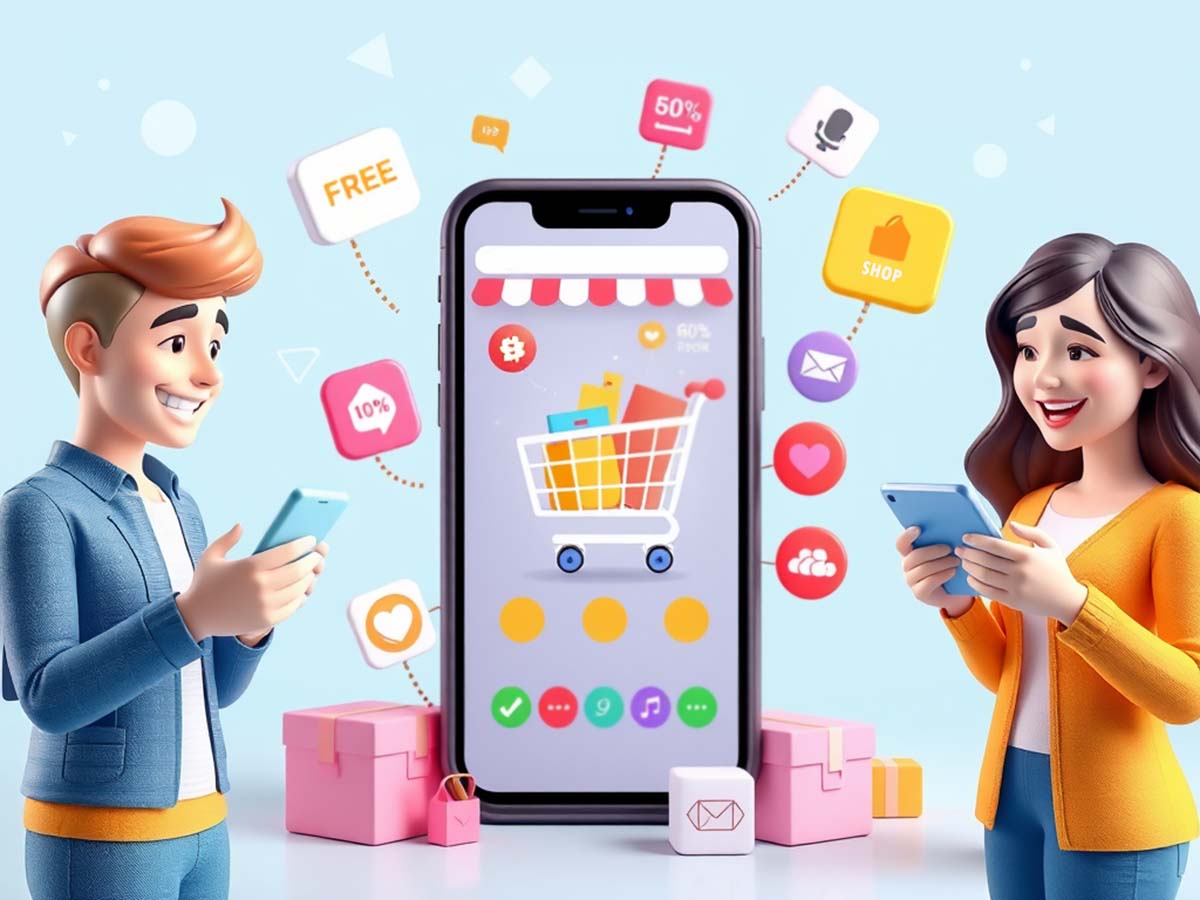
The way people spend money on the internet has changed a lot in recent years. With the rise of online shopping, social media promotions, and mobile transactions, understanding consumer behavior in this space is more important than ever. Whether you run a small business, manage a blog, or simply enjoy reading about new trends, knowing how online spending works can help you make better choices and connect more deeply with your audience.
Why Understanding Online Spending Matters
Many of us now use the internet to make many daily purchases. From ordering dinner to buying a new pair of shoes, digital spending touches almost every part of our lives. This shift in behavior changes how businesses market their products and how consumers think about money.
When we talk about online spending, we refer to more than just the act of buying. It also involves the research, the reviews, and the social interactions that lead to a purchase. For instance, before making a purchase, many people read user reviews or ask for opinions on social media. These steps help build confidence in the decision.
The interaction between online spending and consumer behavior can be observed in many real-life situations. Imagine a family member sharing a review of a new gadget on their social media feed. A friend sees the post, checks the product page, and decides to buy the item because they trust the recommendation. This simple example shows how personal opinions and online connections shape spending decisions.
Factors Influencing Digital Spending
Digital spending is affected by a variety of factors. Some of the key elements include:
- Social Media Influence:
Social media platforms have become places where people learn about products and share opinions. A friendly post or video review can impact the choices of many followers. - Online Reviews and Ratings:
Many buyers rely on reviews to decide if a product is worth purchasing. A product with a mix of good and honest reviews often appeals more than one with too many promotional messages. - Ease of Payment Options:
The availability of secure payment methods and one-click purchases makes online spending convenient and accessible. When the payment process is simple, people tend to spend more time and money online. - Personalized Recommendations:
When websites and apps suggest items based on past searches or purchases, it feels like the service understands what you need. This personal touch can make a shopper feel valued and more likely to buy. - Trust and Security:
Knowing that your personal data and payment information are safe is very important. Consumers are more likely to spend money on sites that they trust.
These factors work together to shape a positive or negative experience. For example, a website with friendly customer support and clear product descriptions can make visitors feel comfortable. On the other hand, a site that is difficult to navigate or lacks reviews may cause hesitation.
The Role of Mobile Devices
Mobile devices have played a significant role in the rise of online spending. With most people owning a smartphone, shopping has become a part of everyday routines. Here are some points that highlight the importance of mobile use in digital transactions:
- Instant Access:
Mobile phones allow shoppers to view products and make purchases quickly. This immediacy often leads to spontaneous buying. - App Convenience:
Many online retailers have dedicated apps that store your preferences and payment details, speeding up the checkout process. - Location-Based Offers:
Some apps provide special offers based on where you are. For instance, a coffee shop might send a discount coupon to nearby users.
An example of mobile influence is when a customer receives a notification about a flash sale while waiting for a bus. The offer is just in time to inspire a purchase, showing how mobile devices keep consumers connected to spending opportunities all day long.
Changes in Consumer Expectations
The internet has raised the bar for what people expect from their buying experiences. Consumers now want more than just a product—they look for value, transparency, and a sense of connection with the brand. Some common expectations include:
- Clear Information:
Shoppers want detailed product descriptions, images, and reviews that are easy to understand. - Responsive Support:
Quick and helpful customer service can turn a hesitant shopper into a loyal buyer. - Simple Navigation:
A clean website design and straightforward checkout process are highly appreciated.
For instance, a small business owner may notice that a website with clear steps for purchasing tends to retain customers better. This attention to detail not only encourages more spending but also builds trust over time.
Real-Life Examples of Changing Behavior
Consider the story of a local bakery that started selling its treats online. Initially, the owner posted photos of the products on social media and encouraged satisfied customers to share their experiences. Over time, more people visited the site, read the customer stories, and decided to order their own treats. The bakery’s website now features a simple design, easy-to-read reviews, and a streamlined ordering process that matches what consumers expect today.
Another example is an online clothing store that began offering style tips along with product listings. Customers could see how different outfits worked together and receive advice from fashion enthusiasts. This personal approach led to a higher rate of returning visitors and more word-of-mouth referrals, showing how personal connections influence spending habits.
The Impact of User Reviews and Ratings
User reviews and ratings have become a part of everyday shopping online. Most consumers read feedback before making a decision. Reviews provide a sense of what to expect, which helps reduce any worries about spending money online.
Consider these points:
- Honest Opinions:
Reviews give a clear picture of what others experienced. They help balance any exaggerated claims made in advertisements. - Community Feedback:
When many people share similar thoughts about a product, new buyers feel more secure in their choice. - Anecdotal Evidence:
Sometimes a single story from another user can make a big difference. For instance, a review mentioning a product’s durability over time can influence a buyer to make a purchase.
A small online shop selling handmade items noticed that after a few genuine reviews started coming in, sales began to rise steadily. Customers began to trust the shop because the reviews offered honest opinions and real-life experiences.
The Role of Social Media in Shaping Spending
Social media has grown into an important space for discussions about products and services. People often share their personal experiences on platforms such as Facebook, Instagram, and Twitter. These shared experiences can influence spending decisions in many ways.
Here are some common trends:
- Word-of-Mouth Sharing:
Friends and family often post recommendations or warnings about products. This type of sharing builds trust naturally. - Visual Appeal:
Pictures and short videos can show a product in action. A vibrant image of a gadget being used or a clip of someone wearing a stylish outfit can capture attention quickly. - Interactive Engagement:
Brands that interact with their followers and answer questions in real time create a positive vibe that encourages spending.
For example, a local restaurant that posts behind-the-scenes photos of its cooking process may see an increase in online orders. The images not only make the food look appealing but also create a personal connection between the business and its customers.
The Effects of Personalization on Spending Choices
When a website or app remembers what you like, it can make shopping feel more tailored. Personalized suggestions can help guide your choices without making you feel overwhelmed by too many options. Here are some benefits of personalization:
- Relevance:
Suggestions based on your past purchases or browsing history make the shopping experience smoother. - Ease of Decision-Making:
When you see items that match your interests, you save time and effort that would otherwise be spent searching. - Building a Connection:
Personalized experiences make you feel like the company cares about your individual needs.
A case in point is an online bookstore that remembers your favorite genres. When the store suggests a new release in that genre, you feel understood and are more inclined to give it a try.
The Future of Digital Spending
The trends in online spending are always changing. New technologies and shifting consumer habits continue to shape the scene. Although predicting the future with certainty is not possible, current patterns offer a glimpse into what might come next.
Some potential changes include:
- More Interactive Shopping Experiences:
Imagine virtual try-ons or live chats with sales assistants that make the buying process more engaging. - Integration of Augmented Reality:
With AR, you might soon see how a piece of furniture looks in your room before you make a purchase decision. - Growing Influence of Peer Reviews:
As more people share their opinions online, the importance of user feedback will continue to rise.
These ideas are not set in stone but reflect the growing role of technology and community in shaping how we spend money online.
Tips for Consumers and Businesses
For consumers looking to make smart online purchases, consider the following tips:
- Read reviews carefully.
Check multiple sources before deciding on a product. - Compare options.
A little research can help you find the best value for your money. - Secure your information.
Always use trusted sites and secure payment methods.
Businesses can benefit from understanding these habits by:
- Improving website design.
A user-friendly interface can build trust. - Offering personalized experiences.
Tailoring suggestions based on customer behavior makes shopping smoother. - Encouraging customer feedback.
Honest reviews can help new customers feel more confident.
For example, a small online retailer might implement a feedback system where customers share brief thoughts about their purchases. This approach not only helps new buyers but also gives the business valuable insights into what works and what needs attention.
Personal Stories and Anecdotes
Many people have stories about their online shopping experiences. One friend once mentioned that a well-placed comment on a product page convinced them to try a new kitchen gadget. The review described how the gadget simplified daily cooking routines, making meal prep faster and more fun. This story is one of many that show how genuine customer experiences can make a difference in spending decisions.
Another story comes from a family that decided to shop for a new entertainment system online. They spent time reading reviews, watching unboxing videos, and comparing prices. The detailed feedback from previous buyers helped them choose a system that worked well for their needs. These examples highlight how personal experiences can guide smart decisions.
Digital online spending and consumer behavior go hand in hand. By understanding the factors that shape our buying choices, both consumers and businesses can enjoy smoother experiences. The growing role of social media, the power of honest reviews, and the comfort of personalized recommendations all contribute to the dynamic world of online transactions.
No matter whether you are shopping for yourself or managing an online business, paying attention to these trends can lead to smarter decisions and better connections. The modern way we shop is filled with opportunities for both learning and growth, and being informed about these shifts helps everyone move forward with confidence.


No Comments